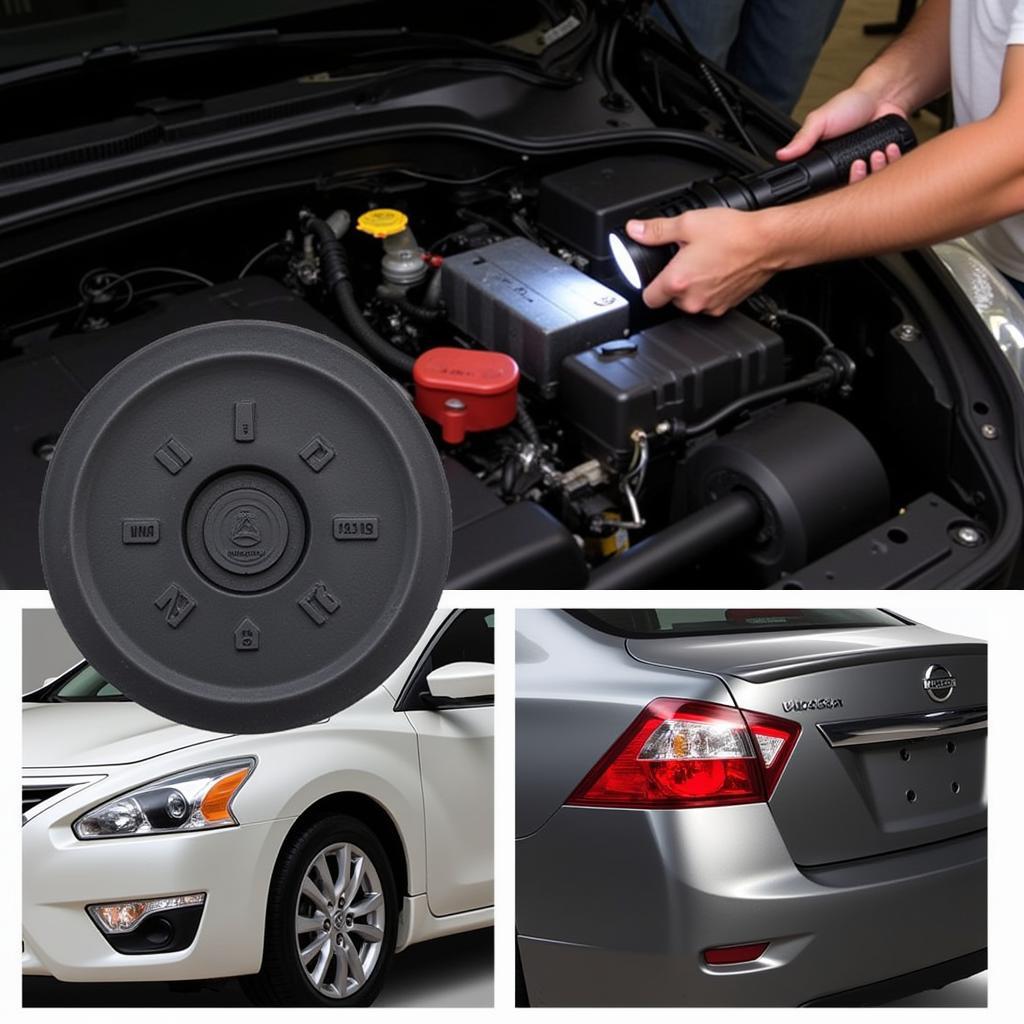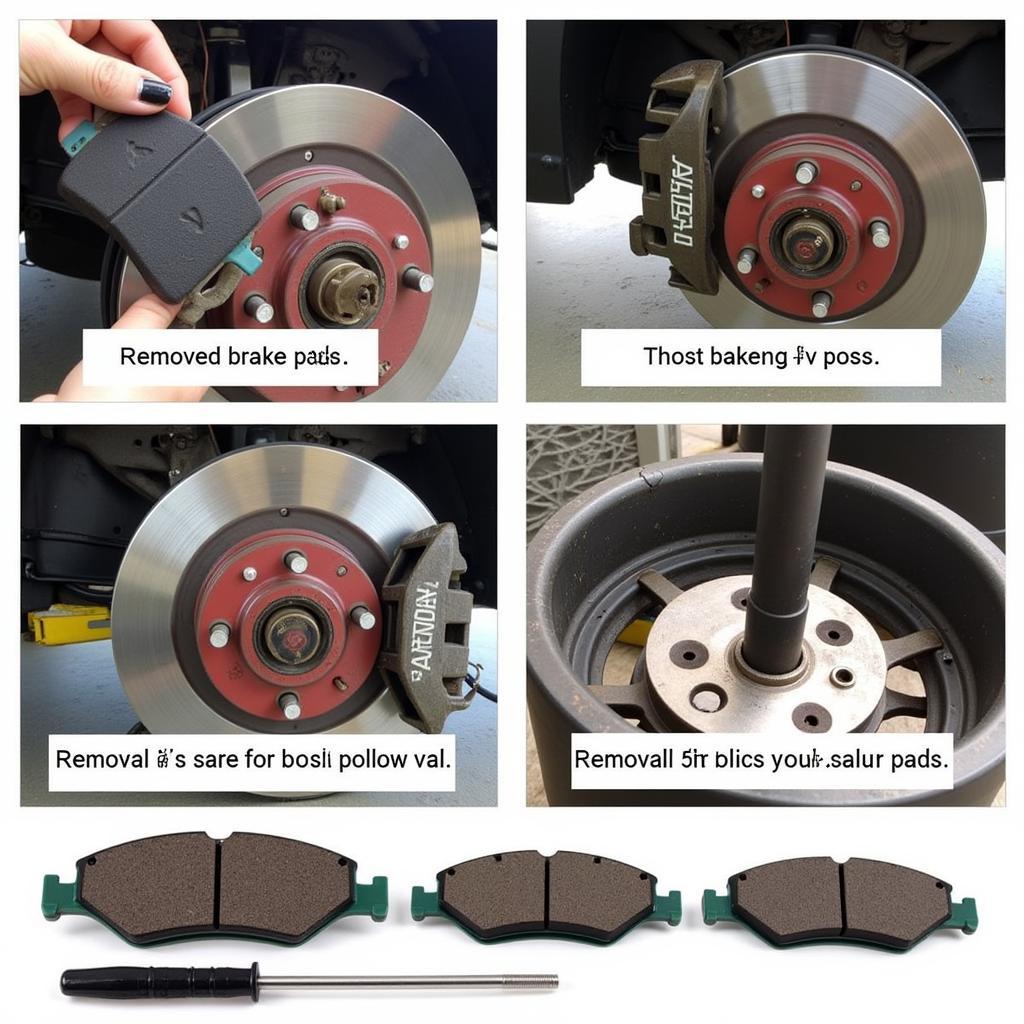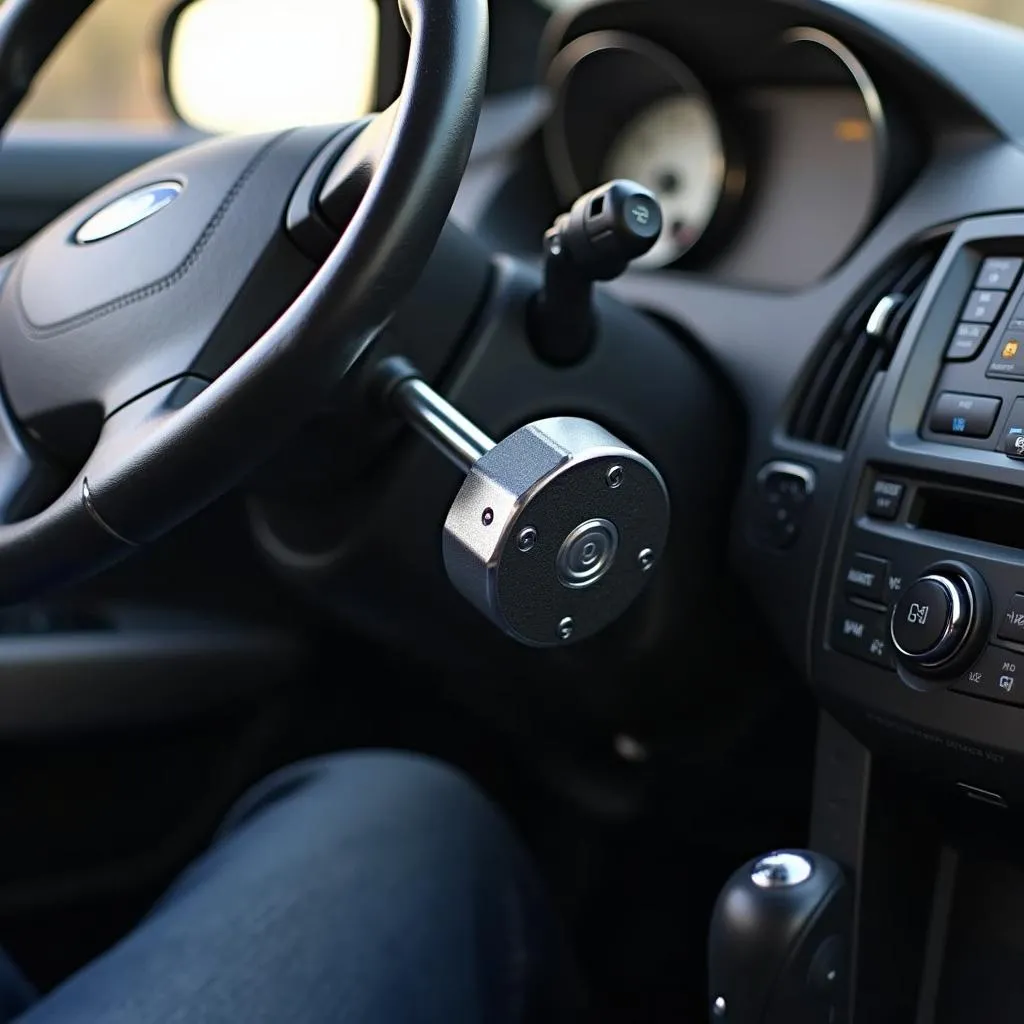The altima brake warning light is a crucial indicator of potential braking system issues. Ignoring this warning can lead to serious safety risks, so understanding its causes and solutions is essential. This article will guide you through diagnosing and resolving problems related to the altima brake warning light, empowering you to address them effectively.
If your Altima’s brake warning light illuminates, it signifies a problem within your braking system. This could range from low brake fluid to more severe issues like worn brake pads or a malfunctioning ABS system. Don’t panic! Understanding the various causes can help you pinpoint the problem. See our guide on the F150 brake warning light for more information on brake systems in other vehicles.
Common Causes of the Altima Brake Warning Light
Several factors can trigger the brake warning light in your Nissan Altima. Here are some of the most common culprits:
- Low Brake Fluid: This is often the most straightforward cause. Low brake fluid can indicate a leak in the system, requiring immediate attention.
- Worn Brake Pads: As your brake pads wear down, they eventually reach a point where they trigger a sensor, illuminating the warning light.
- Faulty Brake Sensor: The sensor itself could be malfunctioning, sending a false signal even if the brake fluid level and pads are fine.
- ABS Issues: Problems with the Anti-lock Braking System (ABS), such as a faulty sensor or module, can also trigger the warning light.
- Parking Brake Engaged: Sometimes, the simplest explanation is the correct one. Make sure your parking brake isn’t engaged.
After this introduction, you might find it helpful to consult resources on other vehicles like the F150 2013 brake warning sound.
Diagnosing the Problem
Identifying the specific cause of the altima brake warning light requires a systematic approach.
- Check the Parking Brake: Ensure the parking brake is fully disengaged.
- Inspect Brake Fluid Level: Locate the brake fluid reservoir under the hood and check the fluid level. It should be between the minimum and maximum marks.
- Visually Inspect Brake Pads: If possible, check the thickness of your brake pads through the wheel spokes. Thin pads need replacement.
- Scan for Trouble Codes: Using an OBD-II scanner, you can retrieve diagnostic trouble codes that pinpoint the specific issue.
For related issues in other Ford models, check out the 2004 Ford FR50 brake warning light guide.
 Checking Altima Brake Fluid Level
Checking Altima Brake Fluid Level
Solutions and Repairs
Once you’ve identified the cause, you can proceed with the appropriate solution.
- Adding Brake Fluid: If the fluid is low, top it off with the correct type of brake fluid specified in your owner’s manual. However, simply adding fluid doesn’t address a leak, so further inspection is necessary.
- Brake Pad Replacement: Worn brake pads require replacement by a qualified mechanic.
- Sensor Replacement: A faulty brake sensor will need to be replaced.
- ABS Repair: ABS issues can be complex, often requiring professional diagnosis and repair.
- Remote Diagnostics and Programming: Remote software installation and programming can address certain software-related issues within the braking system.
If you own a Ford F-150 and experience brake warning light problems, check out the 2013 F150 antilock brakes warning lightand brake light site youtube.com.
 Replacing Altima Brake Pads
Replacing Altima Brake Pads
“Regular brake inspections are crucial for maintaining safety and preventing costly repairs,” says John Davis, a certified automotive technician with over 20 years of experience. “Addressing brake warning lights promptly can save you from potential hazards on the road.”
Why is My Altima Brake Warning Light Flashing?
A flashing altima brake warning light often indicates a more serious problem with the ABS system.
What Does it Mean When the Altima Brake Warning Light is On and the ABS Light is On?
When both lights are illuminated, it could indicate a combined issue with the standard braking system and the ABS.
“Modern vehicles rely heavily on electronic systems, and remote diagnostics can often pinpoint issues efficiently,” adds Maria Sanchez, a software engineer specializing in automotive diagnostics. “This allows for quicker and sometimes less invasive repairs.” You may want to see the resource on the 2018 Ford F150 brake warning Ford Pass for information related to remote diagnostics.
Conclusion
The altima brake warning light is a vital safety feature. Addressing the underlying issue promptly ensures the proper functioning of your braking system and prevents potentially dangerous situations. Regular maintenance, timely repairs, and utilizing remote diagnostic services can contribute to a safer and more reliable driving experience.
FAQ
- Can I drive my Altima with the brake warning light on? It’s highly discouraged. It could indicate a serious problem, potentially leading to brake failure.
- How much does it cost to fix an altima brake warning light issue? The cost varies depending on the cause. It could range from a simple fluid top-up to more expensive repairs like brake pad or ABS module replacement.
- How often should I check my Altima’s brake fluid? Checking your brake fluid level monthly is recommended.
- What type of brake fluid should I use for my Altima? Consult your owner’s manual for the specific type of brake fluid recommended for your model year.
- Can I replace my Altima’s brake pads myself? While possible, it’s recommended to have brake pad replacement performed by a qualified mechanic.
- What is the ABS system, and how does it work? The Anti-lock Braking System (ABS) prevents wheel lockup during hard braking, maintaining steering control.
- What should I do if my Altima’s brake warning light comes on while driving? Pull over safely as soon as possible and assess the situation. If you’re unsure, contact a qualified mechanic.

